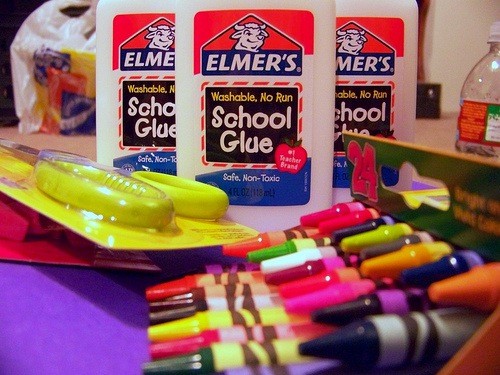Today is the first day of school in our house. I sent the kids off with brand new back packs filled with grown-up scissors, wide and college ruled paper, and Vis-a-Vis markers. And I was not alone.
Nielsen predicts consumers will spend almost $1.6 billion in back-to-school supplies this year. Despite economic concerns Nielsen forecasts growth of over 2% in the school and office supplies categories sold through mass market grocery and drug stores this year.
Over one fourth of this school and office supplies are sold between mid-July and early September during the back-to-school push. Top selling items include essentials of paper, planners, writing instruments and ink.
“Consumers may be cutting back in terms of discretionary spending, but they are not about to send their kids to school without the necessities,” said James Russo, VP of marketing, food and beverage sector, The Nielsen Company.
It’s not all three ring binders and number 2 pencils. The back-to-school selling season has broad retail implications:
Mass Merchandisers Win – High gas prices are motivating consumers are looking to consolidate shopping trips more than ever. This is great news for grocery and drug stores with an office supply departments, but not so good for specialty retailers and office supply stores. Most people I know take the most painless route possible. In the absence of a package deal, we go to the store that has taken the time to gather all the supply lists for us and collect it together in the most efficient way possible.
Third grades have cell phones – Younger and younger children are getting connected. With kids spending time in new activities and with different friends, back-to-school a time for adding buying nifty hot pink phones and adding kids to family plans. According to Nielsen Mobile, 46% percent of U.S. tweens (age 8-12) and 80 percent of U.S. teens (age 13-17) use a mobile phone. I’m holding out on this front.
Kids Gotta Eat – Peanut butter and jelly sales spike the four-week period surrounding the first day of school. Alternatively, the anti-peanut bias in many school districts drives demand for non-peanut based products. Other items getting a boost include food storage containers, sandwich bags and paper bags. In our house we will stock up on cracker snacks and cute little fruit cups.
Clothes? – Nielsen mentioned that apparel retailers may suffer for the same reason as the office supply stores. Consumers tend to associate discrete shopping destinations like clothing stores with discretionary spending whereas the apparel picked up at Wal-Mart get blurred into the grocery budget. From a practical standpoint, depending on where you live the weather hasn’t cooled off enough by the time school starts to justify buying new clothes. Most of us tend to get by on as little as we can until the first frost.
How can you benefit? If you’re a market timer, mark your calendar and invest strategically next year!
